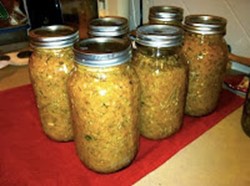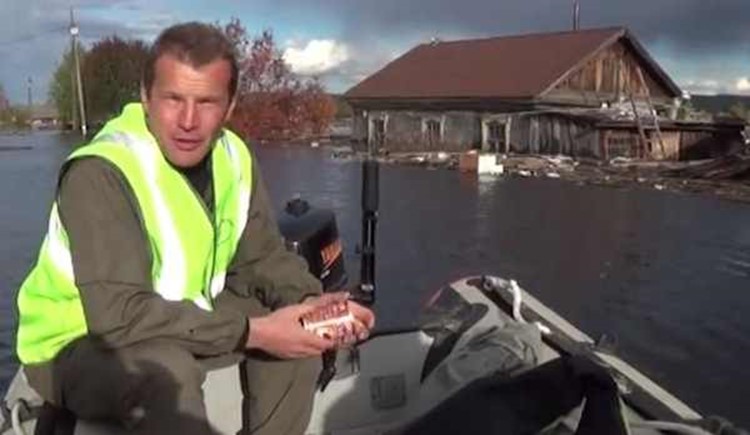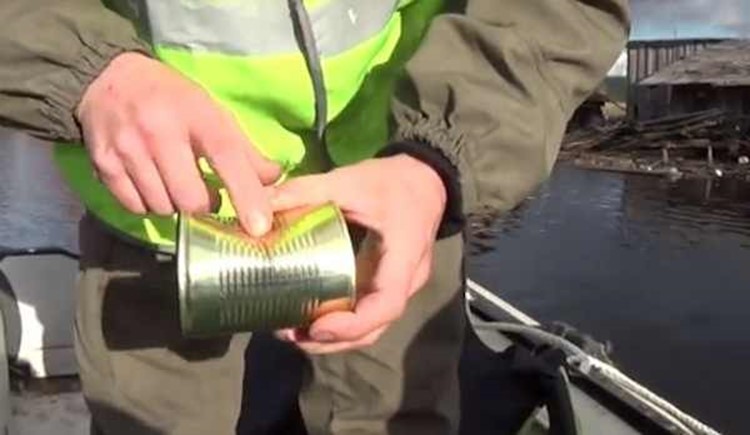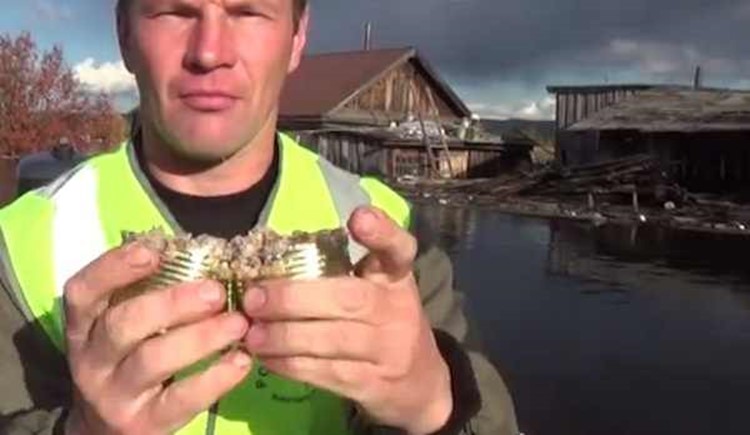This is a guest post by Griffin.
Based on all the comments from regular readers about the value of dollar stores, I had to see for myself what kinds of great deals I could find. I went to the local Dollar Tree to help me with the 3 Fs of survival (Food, Fire, and Fortification).
There’s tons of information out there on building bug out bags or stock piling for bartering. It’s easy to spend a few grand on gear at REI or specialty outdoor stores.
So what can we get for a dollar these days that can help us prepare when SHTF?
If I had just $5 to build a kit, the 5 items I’d buy would be these (with uses in parenthesis):
- 10x 30 packs of matches or 3 pack of butane lighters (start a fire)
- 4 pack of steak knives (defense, process food)
- 20 pack of 20 gallon trash bags (clothes, water storage, bag to carry supplies)
- 6 pack of 24oz Crystal Geyser Waters (water supply, holding tank)
- 2 aluminum cook pans (purify water, cook food)
That’s a pretty good start for $5. Some alternative good items are a pound of trail mix and 55 yards of dental floss.
As I walked aisle by aisle I was amazed by how many useful items there were that would be great to have and cost way less than even a “discount” store like Target or Walmart.
A small categorized list includes:
Hardware: LED flashlights, 8 pack batteries, screw drivers, paracord rope, scissors, glow sticks, super glue, duct tape, ponchos, tea lights, candles, wire brushes, silicon, gardening gloves, and zip ties.
Medical: gauze pads, pain killers, petroleum jelly, ace bandage, antibiotic ointment, multi-vitamins, hydrogen peroxide, rubbing alcohol, first aid kits, sleep aids, tweezers, anti-diarrheal, q-tips, cotton balls, shaving razors, 6 pack facial tissues, 4 pack toilet paper, and travel toothbrush kits.
Food: 1 lb salt, 1 lb sugar, 1 lb beans, 6x 100 calorie granola bars, 1 lb trail mix, 1 oz beef jerky, cocoa, coffee, cereal, dried fruit, and cooking spices.
Cookware: Variety of knives, can openers, and utensils.
Cleaning: bleach, soap, ammonia, Clorox wipes, shampoo.
A lot of the goods at the dollar tree are generic brands. I’ve tried tons of generic brands for everything from cereal to shampoo. I find that about half the time the generics are chemically the same thing and a better deal at a fraction of the price. The other times I find that the generics just don’t work/taste as well as the originals. It’s really up to you if you care about brand names when the grocery stores are emptied and your dollar bills are worth toilet paper.
In TEOTWAWKI situation, generics will do just fine for barter or backup use, in my opinion.
In Summary, the dollar stores do stock a ton of useful stuff at an unbeatable price. I definitely don’t mind spending $30 bucks for an extra kit if it will help friends or neighbors.
I’ve even debated buying a plastic container and using silicon to seal it so I can bury an extra stash or two on the cheap. I’ll be able to rest a little easier at night knowing that somewhere out there are a few boxes of goods that contain the basics for 3 days of survival and only cost me $20.
—————
Other comments:
Love the aseptic packaged milk! I like it because it has a long shelf life and tastes better to me than powdered coffee creamer. I also like to grab the soup in a tube – all the ingredients for a pot of soup, and can also be used to flavor beans, etc. The single servings of coffee, similar to tea bags are really valuable – easy to store long-term and so barter-able! Coffee filters which can be used to filter a lot of things besides coffee.
————-
Extreme variety of glow stick products. I keep the “bracelets” handy for drink stirrers, color coded for each person.. And your glass doesn’t get lost in the dark! Glow sticks are attached to every first aid kit, and handy to crack to find the also included led flashlight that comes from Dollar Tree. Only difference I have found with those is they don’t come with batteries included, vs the multipack of led flashlights from Harbor Freight which do come with batteries and cost more unless I have one of their super duper coupons. The seed packs they have are pretty stingy on the amount of seeds, but you get what you pay for!
Chalk, gift wrap, pop rocks and first aid supplies. I keep multiple digital thermometers from there so everybody has their own, and tons of the anti-itch cream which works really well on fire ant bites, real and grandchild imagined!
——————
When I hit the dollar store, I look for stuff made in the US and Canada. I avoid any personal care products made in China, and things you would consider ‘durable goods’ (knives, tools, etc) made there as well. Take care with the batteries, sometimes they’re on the far end of their shelf life and were sold in bulk to the buyers at a steep discount.
I’ve recently acquired a bunch of US-made screwtop plastic containers, shaving creams and soaps, and matches. Last fall, when they had their back-to-school sale, they sold string backpacks and I made a couple ‘handout’ kits for people showing up at my door. Ten bucks and they had the bare minimums for getting by in an emergency, including the carrier. I gifted half of them and keep the rest in one of my bins for when the ‘big one’ hits.
—————–
In the spring time, I picked up a whole case of solar yard lights at Dollar Tree. These can be charged outside and used inside. I haven’t seen the six pack of emergency candles there in quite some time.
When I went in, yesterday, I picked up some plastic drop cloths, clothes line rope, antiseptic wet wipes, emery boards, pencils, sharpeners, and extra erasers, med spoon and dropper kits, medicated lip balm, shower curtain liners (for the car first aid kit), liquid hand soap, and 100 plastic gloves (to use when putting gas in the car). I never touch the pump handle. You don’t know who has touched it before you or if they have the flu or not.
—————
Yup, Dollar Tree has a pair of generic chap stick for $1 – burns with same intensity as the original product which is $2 for one tube – thats worth it.
Also noticed Progresso soups and gravy starters are 1/3 the cost of Wal-Mart, half of other department stores. A good portion of soup too – mix with a canned chicken and you have a tasty meal.
—————–
Dollar Stores are great BUT…. You really have to watch their product lines. Many of the items that they sell are now smaller portions than what is sold in other “full price” stores. Also my local WallyWorld sells many of the same exact health care products on a designated shelf in the health care and pharmacy department for .88 cents! You really have to watch what you are buying. Also the GV line of health care products are the same items for the most part as the name brand lines.
Something to ponder…Do people really think Albertson’s or Wall Mart have a toothpaste factory or a French fry factory…NO, the contract goes out to firms that do this full time. I know I work in a food processing factory and the same name brand item goes in one bagging line and the store brand goes in another bag line…kind of like asprin or other items. It;s not always this way but trust me you would be surprised what kind of profits are generated due to the color of the box of bag and the NAMEBRAND on it. Its all about consumer brand loyalty for these big established megacorporations.
AND…if you don’t want to ingest CHINESE produced foods….LOOK AT THE LABEL especially on frozen items. Our DT sells frozen strawberries and some mixed vegitables from the land of chemicals and low hygene….However, they also sell name brand frozen French fries from a nationally known name brand maker as well as what is known as B Grade fries. Those are products that don’t make the quality grade and are sold under other off-brands or store brand names. There is nothing wrong with B Grade its just not up to the makes high standards for color, sizing, or other factors and would otherwise end up as cattle feed if not sold to a re-packer as a store brand or independent brand item.
Sadly, we have lost two of our regional private dollar stores in the past few years due to mismanagement. We have lost a GREAT DEAL of selection with just DT in our towns. Another threat to dollar stores future are the exchange rates between currencies. The last few years have been good for dollar store consumers but a change in that ratio can and will spell doom to the buying power of the dollar for US citizens.
Beware and become educated and profit from being a good consumer.
—————————-
I have noticed the same thing with the emergency candles at the Dollar Tree we stop at on the day trip to our daughters. Now we buy the tall candles in glass jars some have religious pictures on them. They will burn for 20 hrs or more I think. I have never used one all the way down. We are now buying a few every month.
————————
I’ve noticed they have some nice canned food, like canned strawberries and pie fillings that you don’t find elsewhere.
—————————
Dollar Tree has window/ door alarms for $1 that can be used as perimeter alarms. They come with batteries.
———————————-
Dollartree in my area carries mouse traps in packs of 4 and rat traps in packs of 2. those rat traps can take squirrel/tree rats making them cheap and silent game getters. as well as pest control, I keep about 100 on hand. candles used to be a good deal (and made in USA) but now they only sell tea-light candles in packs of 8, I can get 144 pack for $5 at another shop.
they also carry heirloom variety garden seeds, if you check in in October/November you might be able to get their entire leftover inventory for $1 (I got 100 packs of seeds 2 years ago in late fall)
——————
You can also catch doves and other seed-eating birds with rat traps–make sure you have a stout string or piece of baling wire to secure it to something. Bait the end of the trap with cracked corn, and a little on the bait pedal. The best way to secure the bait so it doesn’t get lost or used up is to glue it to the trap with Dollar Tree pancake syrup…
Also, other deals on storable edibles include canned Mackerel (wild caught) for $1 per can, Jumex fruit nectars, Boxed milk (keeps for months), and vinegar.
——————–
You can get online the 8″ candles for $1 but for the shipping cost I go to Dollar General and pay $1.50.
I have a cardboard box of 8″ candles because they burn for 100 hours ( I documented that) and that’s a great deal for $1
————————
Start now to make sure you are staying prepared.
Via: thesurvivalistblog
 Follow
Follow







